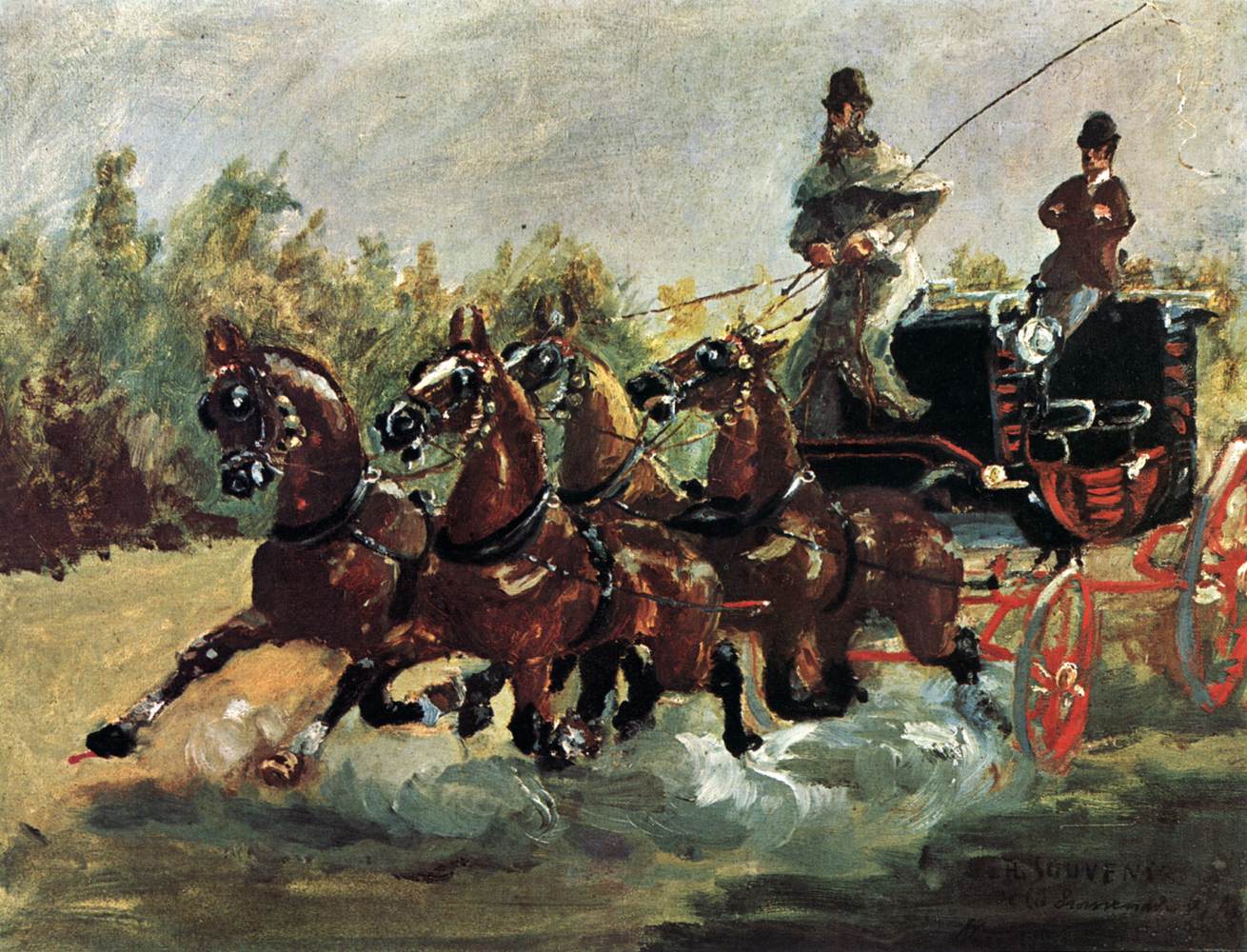French painter and lithographer. He was the son of a wealthy nobleman, a direct descendant of the counts of Toulouse. His eccentric father lived in provincial luxury, hunting with falcons and collecting exotic weapons.
Toulouse-Lautrec fell and broke both legs when he was a child. His legs did not heal properly; his torso developed normally, but his legs were permanently deformed. His stunted growth has traditionally been seen as the result of this accident, but more recently doctors have theorized that it may have been the result of a rare genetic abnormality.
He showed an early gift for drawing. Encouraged by his first teachers, the animal painters René Princeteau and John Lewis Brown, Toulouse-Lautrec decided in 1882 to devote himself to painting, and that year he left for Paris, where he studied with Bonnat and Cormon and set up a studio of his own when he was 21. He settled in Montmartre, where he stayed from then on.
Toulouse-Lautrec habitually stayed out most of the night, frequenting the many entertainment spots about Montmartre, especially the Moulin Rouge cabaret, and he drank a great deal. His loose living caught up with him: he suffered a breakdown in 1899, and his mother had him committed to an asylum at Neuilly. He recovered and set to work again. He died on Sept. 9, 1901, at the family estate at Malromé.
As a youth he was attracted by sporting subjects and admired and was influenced by the work of Degas. He admired and was influenced by Japanese prints. His own work is, above all, graphic in nature, the paint never obscuring the strong, original draftsmanship. He detailed the music halls, circuses, brothels, and cabaret life of Paris with a remarkable objectivity born, perhaps, of his own isolation. As an observer and recorder of aspects of working-class women's life and work (washerwomen, prostitutes, dancers, singers) he ranks with Daumier, Degas, and Manet.
His garish and artificial colours, the orange hair and electric green light of his striking posters, caught the atmosphere of the life they advertised. Toulouse-Lautrec's technical innovations in colour lithography created a greater freedom and a new immediacy in poster design. His posters of the dancers and personalities at the Moulin Rouge cabaret are world renowned and have inspired countless imitations.
After a life of enormous productivity (more than 1,000 paintings, 5,000 drawings, and 350 prints and posters), debauchery, and alcoholism, Toulouse-Lautrec suffered a mental and physical collapse and died at the age of 37.
His life has inspired numerous biographies, of varying accuracy. Although exhibitions of his work were not well received in his lifetime, he is now one of the world's most popular artists and is represented in most of the major museums of France and the United States. Many of his sketches and some paintings are in the Musée Toulouse-Lautrec of his native Albi. Recent criticism has detached his shrewd professional drive from the trappings of legend around his Parisian life.
While he belonged to no theoretical school, he is sometimes classified as Post-Impressionist. His greatest contemporary impact was his series of 30 posters (1891-1901), which transformed the aesthetics of poster art.
//
![]()









